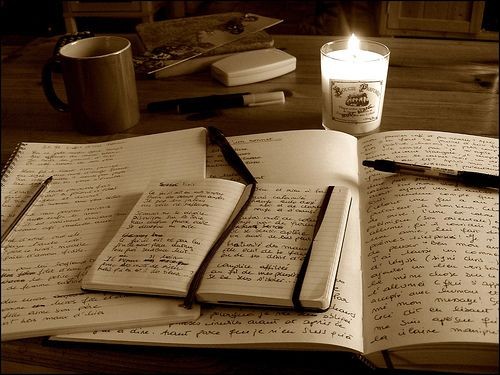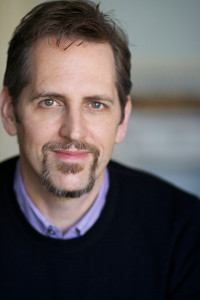As the word implies, a “Scriptment” is somewhere between a script and a treatment. It’s a complete scene-by-scene description without the dialogue. Or maybe it has some snatches of dialogue. But it’s really about telling the reader what happens, scene by scene, in the most detailed way possible without being a full script.
So is writing a scriptment a good idea?
I say “yes,” but not for the reasons one might expect.
I suggest a different use for such a document. For me, it’s a useful, even game-changing interim step between an initial outline or treatment (sometimes the words are used synonymously), and the actual script. And it can make the experience and product of the writing much better.
I typically outline my scenes in advance and have a general sense of what’s supposed to happen in them — who does what, and how the scene ends, and how it advances the story in some way.
But lo and behold, when I fire up screenwriting software and go to write the script, I immediately realize that I usually don’t know nearly enough about the specifics to be able to have a pleasant experience of these scenes flowing onto the page.
Instead, it’s often a struggle, because I realize that what I’ve outlined is too bare bones compared to the level of detail that a fully written scene would need. But now I have a blinking cursor and am supposed to write INT. LOCATION – DAY and launch into some compelling description, action and dialogue. Because I’ve already outlined it, right? So I should know!
This is where the process tends to break down. It leads to a very stifled, analytical quest to try to “figure out” the scene, which tends to not go well. I have very little creative imagination at this point. I’m usually just cursing how thin my outline is, and intimidated by the amount of information and ideas I now need to really start “writing.”
I can rough something in, but usually I will hate it. It will be discouraging. I will know it’s not that good. And I can lose faith in the project and process.
There’s a better way. In my experience, the rush to start writing actual scenes is something I need to control. Just like the rush to go from basic idea to outlining. (That’s what my book The Idea focuses on.)
I recognize that before I start writing full scenes, I need to go deeper and more detailed in the outline. I want to feel like I have everything I need to be able to write them — until the scenes feel like they WANT to be written, and will just flow out of me.
Of course I leave room for surprises, and the dialogue and action may take me to places I didn’t expect , which can be good. But I need to first have my “way into” the scene. I want a clear and solid plan for it that actually inspires me to want to write it, rather than it being a chore.
To achieve this, I like to stay in the open-ended brainstorming phase for longer than one might expect. I might have a basic idea for each scene, in an outline or treatment. But I know that’s not enough.
So I want to “play around” (and that’s the right attitude) further with what might happen in the script, and each of its scenes.
I don’t want that blinking cursor and that rigid format of a “screenplay” or “teleplay” getting in the way of that. I just want to keep asking myself questions and kind of lightly considering the possibilities until an idea comes. Then I write that down and explore it. And this is the main process of building a script.
It doesn’t have to even be in the formal scene-by-scene outline document. It’s almost better if it isn’t. It’s a happier creative process when I just show up each day to expand on the project and let it come from various directions and for various scenes. I can always add what comes to the outline later.
So I’m typically in a kind of free-form “notes document” where I let my mind wander to the first thing that comes to mind that I want (need) to know more about. And I’ll play around there and see where the ideas take me. Then I’ll jump to something else.
Or I might consider a particular scene that I’ve outlined and lightly ask what else there is to know about it. It’s like I’m channeling creative possibilities, and waiting to write until I have received enough of them that it can just pour out onto the script page.
It seems important not to be too impatient and goal-oriented in this process. I also try not to be hard on anything I’ve come up with (the “bad ideas”). I need to stay open and allow the process to work, which means being positive, flexible and relaxed. (Much as part of me just wants to get it done.)
At some point the organizational, analytical mind has to step in. I re-read these thoughts and decide which ones to use. Then I move them around into the appropriate scenes in the outline. As such, I’m expanding that document into something that more resembles a scriptment.
But the goal isn’t “writing a scriptment.” And it’s definitely not to show that document to anyone. It’s just a tool I use to make sure I get the best/most ideas that will help my project. At the same time, I’m making the process of writing it — whether I’m “in the script” yet or not — as fun and productive as it can be.



It is really a helpful blog to find some different source to add my knowledge.
I completely agree and I noticed that right away when I started writing screenplays – the format somehow inhibits me or makes me feel “under the gun” – much better to just keep brainstorming, keep trying different things until the scene/screenplay starts to shape itself.
This feels similar to what William Akers in his book, Your Screenplay Sucks!, calls a “random thoughts” outline. I’m going to try it!
I like your approach, is like having all the right and fresh ingredients (including the secret ones) and the recipe in place…so when starting to cook there is enough place to let the intuition flow.
Thank you for the post.
#SoFan
Erik, that’s not where I thought you’d go with it, which is good and sort of the point. You fleshed out more reasons for this in-between stage. I thought you were going to talk about how it’s a good stage to work out how to tell as much as possible through the visuals before writing dialog.
I’m working on a biopic and drawing from multiple oral histories for the POVs of characters, unexpected details, speaking styles and such. So it’s more of a challenge and more essential to step back and work out the visual storytelling.
Well, that’s one way to get high. I’m sure it helps test the outline, but, like a “vomit” draft, it’s hard to get objectivity back immediately upon completion (needed for editing). At least, I’m always in love during the process, and it takes a while to fade. I would certainly do it if I felt at all stuck at getting started.
Thank you — this is very liberating!
Great article, Erik. Good to hear about your process for tackling the dreaded blank page. I’ve tried something similar on my latest script and I’m finding it takes the pressure off and helps me both come up with more ideas and write faster.